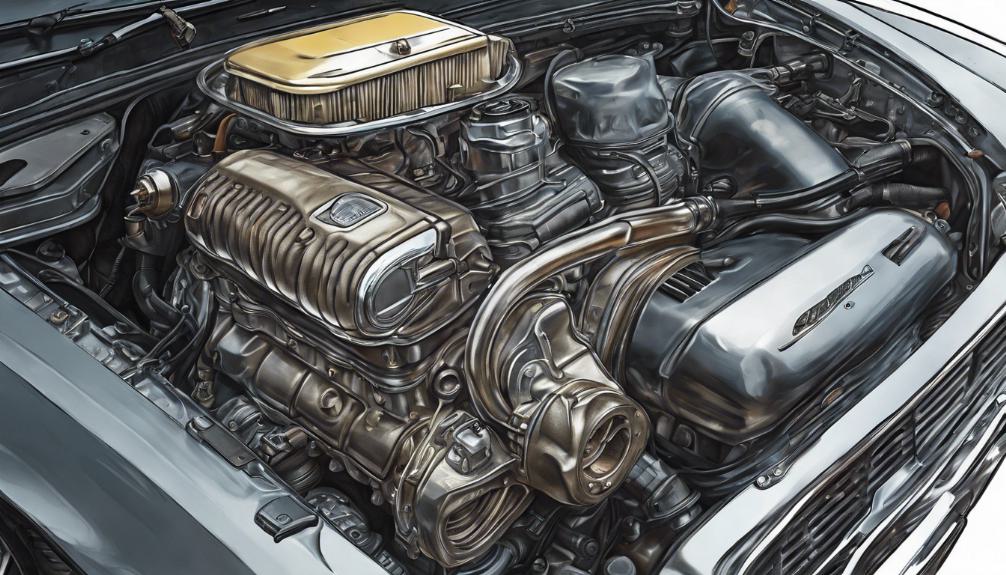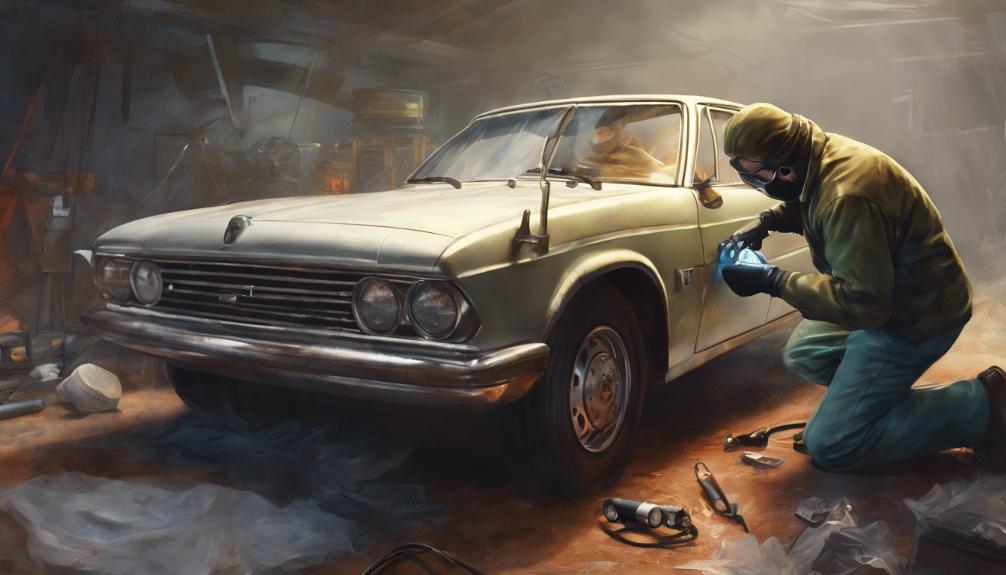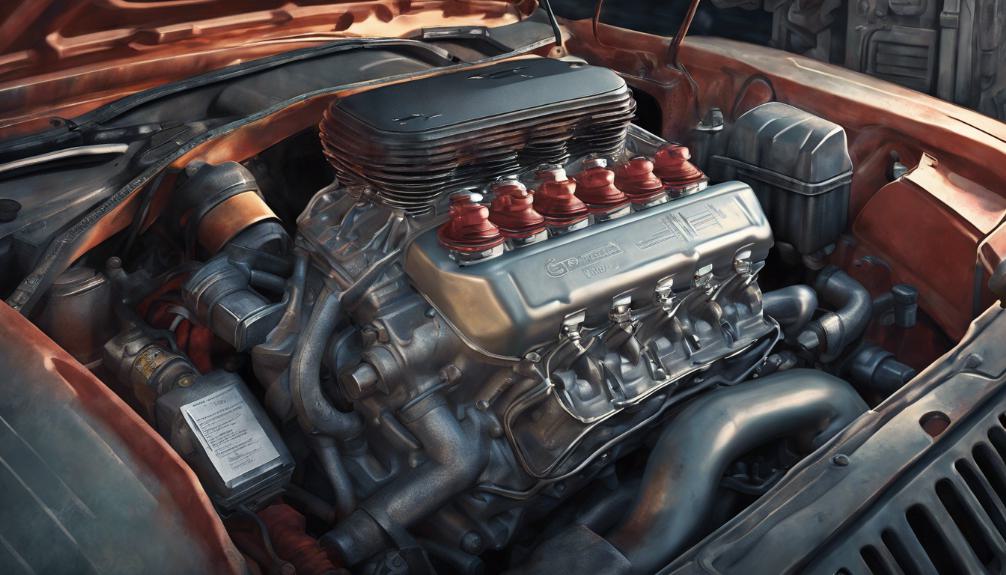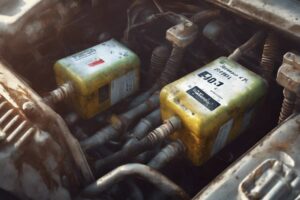When finding your car’s starter, remember it’s typically located near the engine or transmission for easy access during troubleshooting. Essential tools like a socket set and wrenches are important for starter location tasks.
Prioritize safety by disconnecting the battery cable, using wheel chocks, and wearing protective eyewear.
Look under the hood for a cylindrical component or consult online resources for detailed instructions. Some starters may be underneath the vehicle, so combining visual inspection with online help is key.
Overcome challenges by following the starting circuit and thick wires. Uncover more tips for efficient starter location by exploring all available resources.
Key Points
- Starter location near engine or transmission for easy access.
- Consult service manual or online resources for accurate guidance.
- Use safety precautions like disconnecting battery and wearing protective gear.
- Some starters may be found underneath the vehicle.
- Overcome challenges by identifying starting circuit and thick wires.
Importance of Starter Location

Understanding the location of your vehicle’s starter is crucial for efficient maintenance and troubleshooting tasks.
The starter motor, responsible for initiating the engine’s operation, is typically situated near the engine or transmission.
Knowing the starter location provides access to the starter motor, allowing you to inspect and potentially replace it if needed.
The starter can be found in various areas, such as behind the engine, near the firewall, or even underneath the vehicle.
By identifying the starter location, you streamline maintenance procedures and simplify troubleshooting processes related to the starting system.
This knowledge guarantees that you can quickly address any issues that may arise with the starter motor, ultimately contributing to the smooth functioning of your vehicle.
Familiarizing yourself with the starter location is a fundamental step in maintaining your car’s performance and addressing any potential problems efficiently.
Tools Needed for Starter Location
To locate the starter effectively, gather essential tools such as a socket set, wrenches, and possibly a screwdriver for accessing and removing components.
Tool organization is important to prevent misplacement during the process. Having a designated area to lay out your tools can save time and reduce the chances of losing small parts.
If you encounter difficulties during the process, don’t hesitate to seek mechanic assistance. Mechanics can provide guidance on proper tool usage and offer solutions to any unexpected challenges that may arise.
Then, they can make sure that the starter location is correctly identified and accessed without causing damage to other vehicle components.
Remember to work methodically and keep track of the components you remove using a systematic approach.
By staying organized and seeking help when needed, you can efficiently locate the starter and carry out the necessary maintenance or repairs.
Safety Precautions for Locating Starter

When locating the starter, prioritize safety by disconnecting the negative battery cable and using wheel chocks and safety stands before raising the vehicle.
These safety measures are essential to prevent accidents and establish a secure working environment. Also, wearing protective eyewear is recommended to shield your eyes from any debris that may fall during the process.
By taking these precautions, you reduce the risk of injuries and make the troubleshooting process smoother.
To further enhance safety and efficiency, consult your vehicle repair manual for specific details on the starter’s location. This will provide you with accurate guidance and prevent any unnecessary errors.
If you encounter any difficulties during the process, consider utilizing troubleshooting techniques or seeking assistance from a professional.
AutoZone offers free starter testing services, which can help accurately diagnose any issues with the starter and guide you in the right direction.
Remember, safety should always come first when working on your vehicle to ensure a successful and risk-free experience.
Steps to Find Starter’s Location
Positioned near the engine for easy access, the starter in your vehicle is typically located either in the steering column or behind the dashboard on the driver’s side.
To find the starter’s exact location, start with a visual inspection under the hood. Look for a cylindrical component connected to the engine block with thick electrical cables.
If you’re unable to locate it there, consult online resources or your vehicle’s service manual for guidance tailored to your specific make and model.
If the starter isn’t visible from above, you may need to go underneath the car to find it. Make sure to safely lift and secure the vehicle before proceeding.
Many starters are situated close to the front bumper, near the transmission or engine block.
By combining visual inspection with online resources, you can confidently pinpoint the starter’s location, enabling you to perform maintenance or troubleshooting tasks effectively.
Should I Check the Starter Location if My Car Has Been Impounded by Police?
If your car has been impounded by the police, the next steps for impounded car often include checking the starter location to assess any damages or issues. It’s important to follow the correct procedures and paperwork to retrieve your vehicle from the impound lot.
Common Starter Location Challenges

Finding your way through the maze of engine components can present challenges when trying to locate your vehicle’s starter.
Starter accessibility varies among vehicles, with some starters positioned in hidden or hard-to-reach areas. In certain cases, you may need to remove other components or protective covers to access the starter.
The starter’s location may not always be obvious, as it can be tucked away on the driver’s side, near the engine block, or even underneath the vehicle.
To overcome these challenges, consulting your vehicle’s service manual is essential. This manual provides specific details about the starter’s location and any additional steps required for access.
Then, identifying the thick wire connected to the starter from the battery or tracing the starting circuit can lead you to the starter’s whereabouts.
Sometimes, raising the vehicle or using ramps may be necessary to gain a better view of the starter.
By being prepared for these common starter location challenges, you can approach the task of finding your starter with confidence and efficiency.
Tips for Efficient Starter Location Discovery
For efficient discovery of your starter’s location, start by consulting your vehicle’s owner’s manual. The manual will provide you with specific information on where to locate the starter in your car.
Typically, the starter can be found near the transmission bell housing or engine block. Remember that in most cars, the starter is situated on the driver’s side of the vehicle.
However, some vehicles may have the starter placed under the intake manifold or other components, which might require extra effort to access.
If you encounter difficulties locating the starter, consider using troubleshooting techniques such as checking online forums or vehicle-specific guides for assistance.
Seeking professional help from a mechanic or automotive expert can provide you with valuable diagnostic methods to efficiently pinpoint the starter’s location.
As an Amazon Associate we earn from qualifying purchases.










